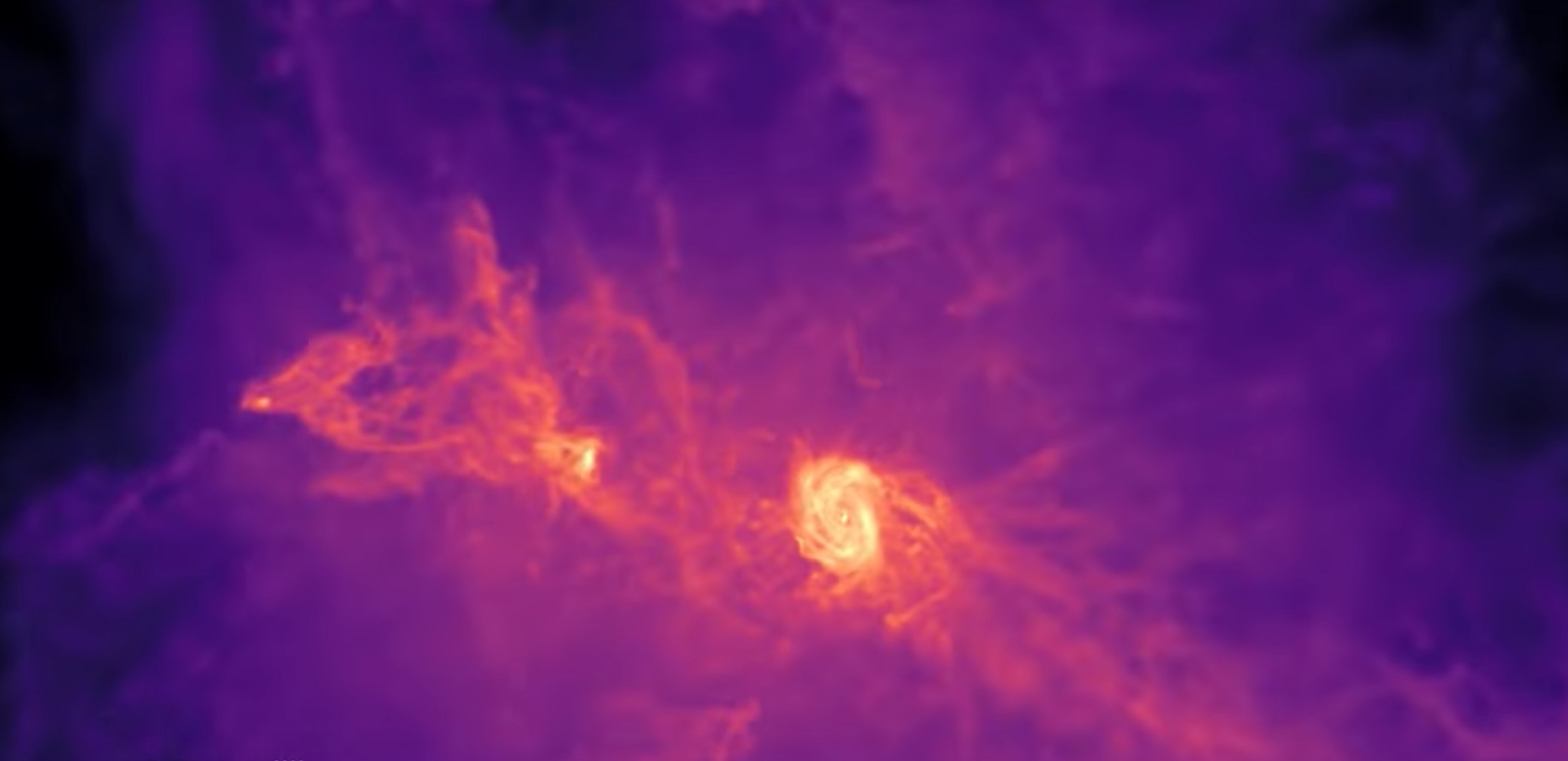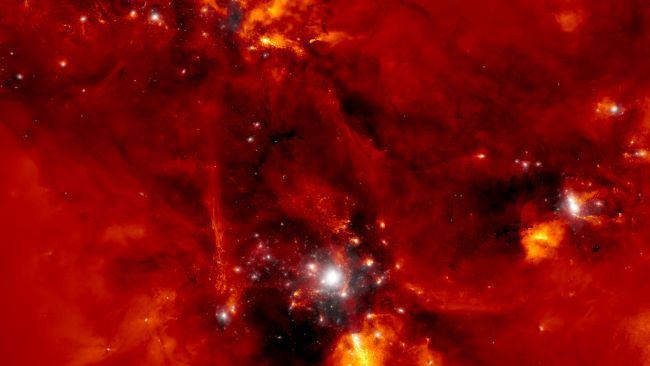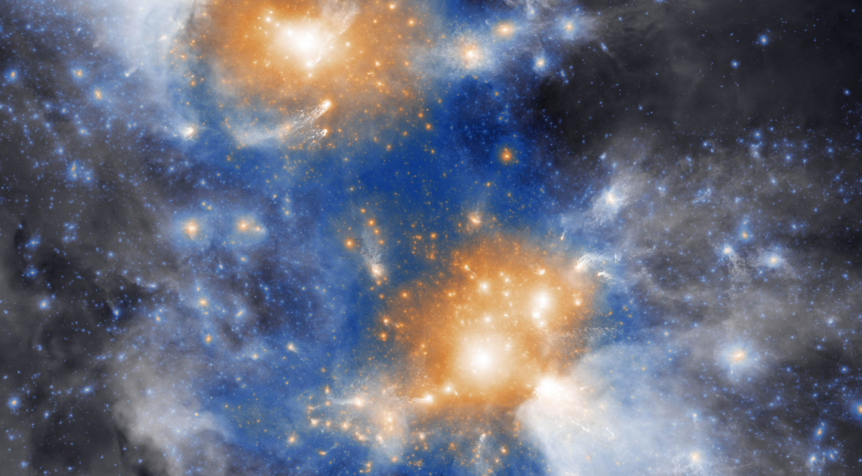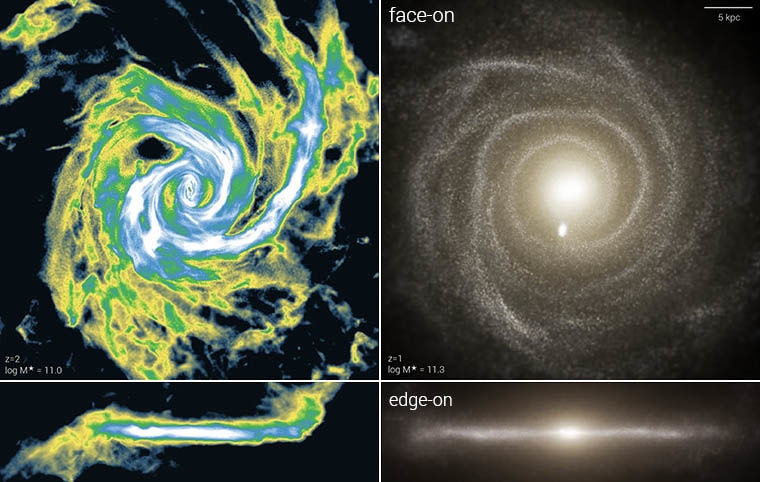Create a free profile to get unlimited access to exclusive videos, sweepstakes, and more!
Take a mesmerizing trip inside the most detailed galactic simulation ever created

Prepare yourself for a mind-expanding journey into the heart of our cosmic backdrop in an extreme digital simulation of how a single massive galaxy first formed and evolved. Created by the IllustrisTNG Project, the TNG50 cosmic simulation is a mesmerizing video time trip into the Big Bang's blossoming brilliance and its fertile galactic breeding ground, depicted in unprecedented detail.
The enlightening results were published in articles featured in the Dec. 2019 issue of the online journal Monthly Notices of the Royal Astronomical Society.
Attempting to form a large-scale model of this mysterious heavenly process encompassing billions of years, the international team of researchers and scientists has crafted a hypnotic virtual space odyssey that will leave you breathless. Buckle up and take a wild trip!
Spanning more than 230 million light-years wide and containing tens of thousands of budding proto-galaxies, this head-spinning simulation tracked more than 20 billion particles representing dark matter, gasses, stars, quasars, and supermassive black holes, over a 13.8-billion-year period.
The video sim seen above reveals the formation of a single mega galaxy through time, from early cosmic epochs up to the present day. The main panel displays the cosmic gas density (high depicted in white, low shown in black). Individual insets show large-scale dark matter and then gas (lower left), and small-scale stellar and gaseous distributions (lower right).
"With the TNG50 simulation we wanted to achieve something which has been impossible in the past, and which is just now becoming feasible. In particular, our goal was to run a really big simulation of the Universe!," team member Dr. Dylan Nelson of the Max Planck Institute for Astrophysics tells SYFY WIRE.
"We wanted to achieve a cosmological simulation which was big, but which at the same time allowed us to peer into the detailed structure inside individual galaxies — at features like their spiral arms, for example," he adds. "By 'cosmological' I mean that the simulation spans such a large region of the Universe that it contains thousands or tens of thousands of galaxies at once, and that collectively, those galaxies are totally representative of a patch of the real Universe. For TNG50, this means that it is 50 million parsecs across (this is where the name comes from), which is about 160 million light-years."
A colossal amount of data was required for this ambitious project, which required researchers to use the number-crunching might of the Hazel Hen supercomputer in Stuttgart, Germany, with its awesome 16,000 cores working 24/7 for over a year to create the simulation.
"Imagine that you’re sitting back, somewhat omnipotent, gazing at your entire simulated Universe," Nelson explains. "Then, you zoom in by a factor of 5000, looking towards one single individual galaxy. This is then about the size of our own Milky Way — 30 light-years across. What TNG50 allows you to do, and what makes it totally unique, is that you can then zoom in, again, and get another 1000 times smaller. This is the level of detail that we have in the very centers of galaxies, where supermassive black holes like the one in our own galaxy reside."
The amazing resolution and scale allowed the researchers to gather key deductions into our universe's past, to peer back to the genesis of disc-shaped spiral galaxies, and see how they have evolved over the universe’s epic history.

















